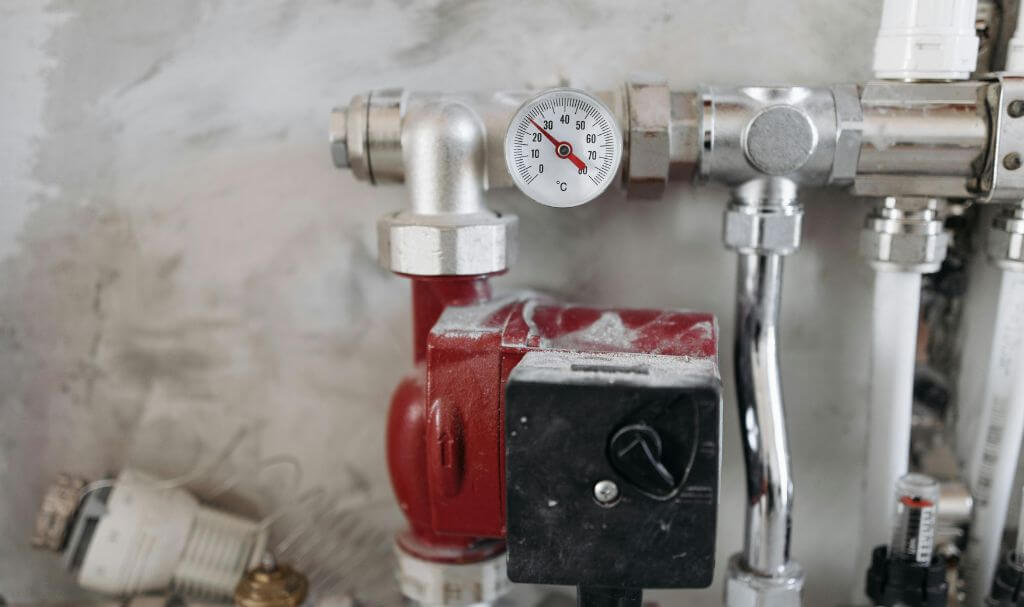Behind the Walls: The Role of Refrigerant Line Sets in HVAC Systems
26 April 2025
5 Mins Read

toc impalement
Every HVAC system relies on a precise balance of components working in unison to transfer heat efficiently. And, the refrigerant line sets are one of the most crucial yet overlooked parts of this system.
The refrigerant lines carry the refrigerant between the indoor evaporator coil and the outdoor condenser unit. This makes the lines an essential part of the entire heating and cooling process of the system.
Additionally, the line sets typically include a larger suction line and a smaller liquid line. Each with a designated role in the movement and phase change of refrigerant. Moreover, their sizing, insulation, and installation directly affect the performance, energy efficiency, and durability of the entire system.
When you install a new HVAC unit or upgrade an existing one, the refrigerant line set must often be reevaluated or replaced. This is done in order to match the equipment’s needs and requirements.
Although this foundational component doesn’t usually attract attention, its correct selection and installation are vital for maintaining climate control year-round.
Introduction to Refrigerant Line Sets

It is important to know about the refrigerant line sets before going ahead with their installation. Here are some important aspects of having refrigerant line sets:
1. How Line Set Sizing Impacts Performance
One of the most important factors in refrigerant line sets is making the correct sizing. You need to ensure that you are sizing the lines correctly to avoid mechanical problems. Additionally, wrong sizing can lead to a reduction in the efficiency and performance of the system.
For instance, if you narrowly measure the suction line, it will increase pressure and make the compressor overwork. This can destroy the equipment and may lead to its failure. Similarly, if your lines are oversized, then you can see oil returning and affecting the lubrication on the compressor.
Moreover, liquid lines that are too small may reduce refrigerant flow and lower system capacity, especially on hotter days. You must consider not only the diameter of the line but also its length and the number of bends. Because each of these factors contributes to friction and potential pressure drops in the system.
Many reliable sources for HVAC components provide properly rated refrigerant Line Sets by https://ad.engineering/linesets/, offering guidance on matching the set to the system’s tonnage and performance needs.
2. The Importance of Proper Insulation and Material Quality
Apart from the proper sizing, you need to check the material quality for proper insulation. This material quality is important in ensuring better performance and efficiency of the system. For instance, copper is the standard material due to its thermal conductivity and resistance to corrosion.
Moreover, if you opt for soft-drawn copper, you can suitably bend and spread it. This flexibility will help you to properly install the system without any issues. Similarly, hard-drawn copper is best suited for rigid, durable, and straight lines.
Additionally, without proper insulation, moisture can accumulate on the exterior, leading to dripping, mold growth, or water damage in finished spaces. So, you should consider having proper insulation for your refrigerant to work and increase its cooling efficiency.
Many pre-packaged line sets come with closed-cell insulation rated for high performance. This helps in maintaining temperature integrity throughout the entire line run. Additionally, insulation quality is just as critical as the tubing itself, especially in long-distance or attic installations.
3. Installation Techniques and Their Impact on Longevity
Correct installation of refrigerant line sets involves more than just connecting two pieces of equipment. You need to bend and secure the lines with proper precision to avoid any kinks or stressing points that affect the flow.
Moreover, the refrigerant lines should be routed with gradual turns and supported at regular intervals to prevent sagging or vibration. Both of which can lead to disastrous leaks over the time.
You should carefully prepare the brazing connections with a nitrogen purge to prevent oxidation inside the tubing. Moreover, this can help you prevent scaling and clogging of the system.
After you install the line set, you must evacuate it appropriately to remove moisture and air before adding the refrigerant. However, you should remember that any shortcuts during installation may not show immediate problems. But with time, they can lead to decreased performance or even system failure.
Additionally, with the proper installation of the system, you can prevent refrigerant leaks. This can also save you from incurring a costly renovation for the system.
4. Matching Line Sets to Modern System Demands
As HVAC systems become more energy-efficient and use newer refrigerants like R-410A and R-32, the specifications for line sets have evolved. Older systems that ran on R-22 operated at lower pressures and often used thinner-walled copper tubing.
Moreover, with the shift to higher-pressure refrigerants, the need for thicker-walled tubing and stronger connections to withstand increased operating stress is increasing. When replacing an HVAC system, you should not reuse existing line sets without verifying their compatibility with the new refrigerant and pressure of the system.
In some cases, you may try flushing, but this comes with its risks and should be carefully considered. The safest approach is often to install new line sets that meet the current code and manufacturer requirements.
Additionally, with the modern HVAC systems and their variable speed compressors and precise control features, the line set becomes critical in maintaining system responsiveness and consistency. So, you need to select the proper line set to ensure that the system is functioning properly.
Investing in System Efficiency Through the Details
Refrigerant line sets might not be the most visible part of an HVAC system, but you cannot overstate their impact on performance, efficiency, and system longevity. From sizing and insulation to proper installation and material selection, each detail contributes to how well the system performs over time.
Additionally, as the heating and cooling technology continues to evolve, staying aligned with the current standards and matching components becomes important. Whether you’re installing a new system or replacing an outdated one, you need to pay attention to the refrigerant line set to ensure that the equipment operates efficiently.
In a market that is increasingly focused on sustainability, energy savings, and long-term performance, small decisions, like choosing the right line set, can make a noticeable difference in overall system success.

















